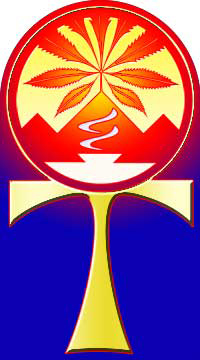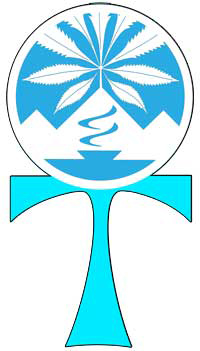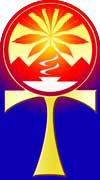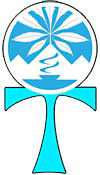keepers of knowledge
The courts often consider the existence of keepers of knowledge in determining if a religion is legally valid.
legal standards
“5. d. Keepers of Knowledge: Most religions have clergy, ministers, priests, reverends, monks, shamans, teachers, or sages. By virtue of their enlightenment, experience, education, or training, these people are keepers and purveyors of religious knowledge.” —United States of America v David Meyers
“an organization of ordained ministers,” —IRS definition of a church
“ordained ministers selected after completing prescribed studies,” —IRS definition of a church
“school for the preparation of its ministers.” —IRS definition of a church
religious freedom reply to IRS standards
The seventh, or “organization of ordained ministers,” criterion has no relevance for churches that do not distinguish minister from congregant. Among Quakers “there is no division between clergy an laity, the vocation of every Friend is to be a lay minister.” The Plymouth Brethren believe in the Reformation doctrine of the priesthood of all believers; the distinction between clergy and laity, practiced by many churches, it considered unscriptural. Also, Jehovah’s Witnesses believe that all their members are ministers, that they are a “body of ministers.” — “Defining Religion in American Law” by Bruce J. Casino, International Coalition for Religious Freedom
The question posed by the eighth criterion - whether or not ministers are ordained after completing a course of study - is irrelevant. Paul, for instance, was “called” on the road to Damascus. Jesus called disciples without seminary training who were, among other professions, fishermen and tax collectors (perhaps all hope is not lost for the IRS). The historic significance of revelation and the mystical call to religious office is ignored by this criterion. The churches of the Appalachian mountains see the presence of “the uneducated preacher” as one aspect of the “fullest expression . . . of the mountain spirit and the mountain religious tradition.”
[O]ne individual or another (usually male) among the people became convinced that God was calling him to preach and exhort. So he would set about establishing a church of his own, often on his property, either in his house or a separate building he might construct. Like a patron to his neighbors in a lonely mountain hollow, he invited them to join with him in seeking the Word and will of God.
In addition, most Unitarian Universalist’ “[p]rofessional ministers have the burden to legitimate themselves by achievement rather than by an ascribed status.” In some black churches, especially Baptist and Pentecostal, the majority of the pastors receive no formal training. “[A] man with a good voice and attractive personality, a sense of humor, and sufficient desire can find a church to serve without formal training.” Finally, Jehovah’s Witnesses believe that true ordination comes directly from God. “Jehovah through Christ ordains his witnesses to serve as ministers - John 15:16.” This concept is common in evangelical denominations. "Those who preach in Plymouth Brethren assemblies are generally well-versed in the Word of God, but usually they have no formal seminary training." — “Defining Religion in American Law” by Bruce J. Casino, International Coalition for Religious Freedom
Finally, since, as outlined above, churches should not be required to have clergy, the existence of schools for the preparation of its ministers, as imposed by the fourteenth criterion, should similarly not be required. In a survey of 250 American denominations over ninety percent report no seminaries or schools of religion. by Bruce J. Casino, International Coalition for Religious Freedom
Kemetic or ancient Egyptian religion
Hem (male) and hemet (female) were the primary Kemetic (ancient Egyptian) words for priest and priestess. The generic version was hem Ntr or hemet Ntr (priest or priestess of the Divine). The Ntr could be replaced with a specific deity name, such as Hem Ra or Hemet Bast.
The web priest (or priestess) was responsible for the purity of the ritual and the cleanliness of sacred rooms, tools, paraphenalia, and priesthood.
The kher heb was the priest or priestess who recited the liturgy and magick spells.
The sesh per ankh were the learned priesthood (including mathematicians, doctors, and scientists).Sesh Per Ankh is ancient Egyptian for “scribe of the House of Life”. This can be translated into English as magician, shaman, witch doctor, witch, priest, doctor, or professor. See Sesh Per Ankh.
The English words Witch and Witch Doctor are translations for Sesh Per Ankh.
The English word “Witch” meant a woman in the Roman Catholic Church-imposed “Dark Ages”. A male Witch was called a He-Witch. The word “warlock” is from the Polish for “oath breaker” and was used in Polish Witch Trials run by the Roman Catholic Church in which large numbers of innocent men and women were tortured and murdered by the Roman Catholic Church as part of official Roman Catholic Church dogma, on orders from numerous Roman Catholic Church Popes. In modern times the word “Witch” refers to both men and women.
The word medicine comes from the prehistoric era of wise women who measure out plants in order to heal. More than two thirds of modern medications (total usage, not sheer numbers of drugs) are derived from Kemetic Witch (ancient Egyptian) herbal preparations!
The sesh ked were the artists of the priesthood (and, yes, the artists were an essential part of the priesthood).




